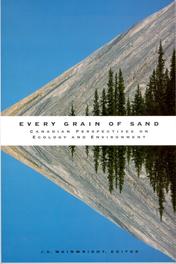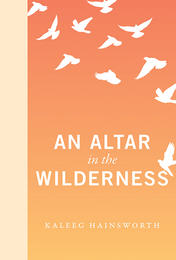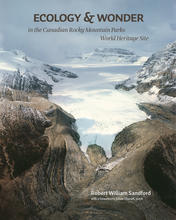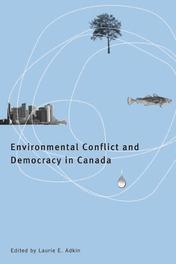Ecology

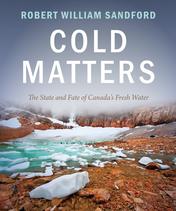
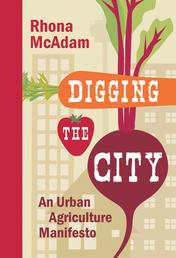

Excerpt from Ecologies of the Moving Image: Cinema, Affect, Nature by Adrian J. Ivakhiv
PREFACE
The world around us contains a wild phantasmagoria of images. Put more provocatively: the world around us is a wild phantasmagoria of images. We live and move in a world that swirls with tempestuous currents made of a kind of audiovisual image-substance. Photographs, films and television programs, videos and computer games – these and other moving images blend and mix with images of the external and internal worlds produced by a global array of instruments, from satellites that face down at us, to telescopes that face away from us, to MRIs, EEGs, and ultrasound sonographs that face into us, to the personal computers, cell phones, and iPads that have become our bodily and mental extensions. Together these make up imagescapes full of motion. These images move us, and we move with them. And as we do, we may realize that we too are moving images, seen and heard and perceived by others who are seen and heard and perceived by us. A world increasingly filled with moving images has remade itself into a world of moving images.
This book examines how images move us. It is not a treatise on the physics of this movement, nor is it an ethnography of ourselves in the midst of these currents. It is not particularly concerned with distinguishing between images and the supposedly "real things" represented, signified, or perhaps masked by those images. Rather, this book steps back from the immersive imageworlds in which we live in order to get a sense of what the moving image is and of what one particular history of it – the cinematic – can tell us today, at this juncture between a photographic and celluloid past and a digital future. "Cinema" refers to one form of moving image, a form that consists of structured sequences viewed by audiences and that emerged in a particular time and place (industrial-era Europe and North America) and has captivated the world over the course of the past twelve decades.
This book presents an ecophilosophy of the cinema. My goal is to think through the ecological implications of the moving images – films, videos, animations, and motion pictures of various kinds – that have proliferated in our world since the late nineteenth century. The "eco" in its philosophy does not restrict itself to the material impacts of the production of those images. It also delves into their social and perceptual effects. This book is about how moving images have changed the ways we grasp and attend to the world in general – a world of social and ecological relations – and about how we might learn to make them do that better.
This project is an ecophilosophy in the sense that it develops a philosophical framework for reconceiving our relations with moving images. This framework is intended to be pragmatic and empirical, rooted in actual experience, but it is also metaphysically speculative and radical in its implications. The works of the two philosophers on whom I draw most deeply, Charles Sanders Peirce and Alfred North Whitehead, have never to my knowledge been brought together for the task of a detailed analysis of cinematic images. To this combination, I bring insights from a broad array of other sources. These include the ideas of other philosophers, such as Henri Bergson, Martin Heidegger, Gilles Deleuze, and Félix Guattari, and a range of post-Deleuzian thinkers; as well as cultural historians' and geographers' studies of visuality and landscape, ecocritics' analyses of representations of nature and the "ecological sublime," feminist and post-colonial critiques of the "imperial gaze", cognitive and neuropsychological studies of affect and perception, neo-Marxist theorizations of film's political economies, and the work of scholars in animal studies, trauma studies, psychoanalysis, and depth psychology, among other fields.
In its essence, this book proposes and applies a model of cinema that I refer to as "process-relational." Such a model sees the world as consisting of relational processes' socio-semiotic-material events, encounters, and interactions that produce and reproduce the world anew in every moment. Of the modern art forms, I suggest that it is cinema – the art of the moving image – that comes closest to depicting reality itself, because reality is always in motion, always in a process of becoming. Cinema not only mirrors and represents reality but also shadows, extends, reshapes, and transforms it. Describing how cinema does this, and how different kinds of cinematic works do it in different ways, is the task of this book.
This book's argument takes its structure from American philosopher C. S. Peirce's categorization of things into their "firstness," "secondness," and "thirdness." Respectively, these refer, at their most basic, to a thing as it is in itself, which is its purely qualitative potency – or, in Peirce's words, its firstness; a thing in its actual, causal and existential relation with another thing – its secondness; and a relation between these two as mediated by a third so as to form an observation or logical or relational pattern – its thirdness. Following these three categories, the argument I present can be visualized as three interlocking rings, with each of the rings in turn consisting of three intertwined braids. The three rings correspond to (1) the film-world, which is the world that a film makes available to viewers; (2) the cinematic experience, which is the way that world is encountered by an actual viewer in the experience of watching and responding to a film; and (3) the context of socio-ecological relations within which a film is made, shared, encountered, and made sense of, and which is in turn changed by the experience.
Let us take these and break them down into further triads. Cinema, I argue, produces and discloses worlds. It is cosmomorphic: it provides for the morphogenesis, the coming into form, of worlds. Following Peirce's triadism, I distinguish among three dimensions of a film-world: its objectworld, which expresses cinema's "geomorphism," its taking on the form of a seemingly stable, material-like world that is there, given for agents like us to act within; its subject-world, which is its "œanthropomorphism," the world of those who are recognized – and who recognize themselves – as active subjects and agents shaping their lives within it; and its life-world, the "interperceptive" and "biomorphic" world of things that are lively and dynamic, that see and hear and respond to one another, and that are constituted by an interactive to and fro between subject- and object-making. This is the first ring of our three-ring circus. 1
The second ring, the cinematic experience, has three layers as well. There is, first, the thick immediacy of cinematic spectacle, the shimmering texture of image and sound as it strikes us and resounds in us viscerally and affectively; this is the moving image that moves us most immediately and directly. Second, there is the sequential unfolding of film's narrative "eventness," the one-thingafter- anotherness that we follow in order to find out what happens next and where it will lead. And third, there is the proliferation of meanings that arise once our already existing worlds are set into motion by what we see, hear, witness, and follow in watching a film or video. I call these three layers or dimensions cinema's spectacle, its sequentiality or narrativity, and its signness; and the results of each of these as they impact us are, respectively, the affective, the narrative, and the referential or semiotic.
The third ring consists of the ways in which cinema affects and interacts with the broader ecologies within which films and moving images are produced, consumed, and disposed of. These include cinema's material ecologies, such as the physical and biological relations necessary for the production of films and the material impacts of that production; and its social ecologies, namely, the social interactions that go into film production and the effects on society of depictions of social actors and groups. But they also include an intermediate realm that I call cinema's perceptual ecologies, a realm in which images and sounds, looks and listens, are exchanged and transmitted among the elements of a world that is communicative by its very nature. Each of these sets of ecologies has been radically altered as moving image media have become established as perhaps the most powerful currency of communication in our world.
This book, then, attempts to understand the nature of the worlds that cinema creates; the ways we are drawn into those worlds, cognitively and affectively, by following their lures and negotiating relations with them; and how those worlds relate to the extra-filmic world – the world that exists before cinema as well as alongside it, and one that continues to exist – albeit in a changed way – after cinema has done its work upon it.
An ethical imperative underlies the model of cinema presented here: the imperative to revivify our relationship to the world. In the second of his Cinema volumes, philosopher and cineaste Gilles Deleuze argued that the point of cinema is "to discover and restore belief in the world, before or beyond words."2 Cinema, Siegfried Kracauer said, is our way of "redeeming physical reality."3 The world as we experience it and the world as cinema portrays it are not two different things – they are many different things. But to the extent that a shared world underlies the many, that world calls for a different and more sensitive involvement on our part than that which industrial-capitalist modernity has promoted and practised for quite some time. In the readings of films that make up the bulk of this book – films that cover a broad spectrum, from westerns and road movies to science fiction blockbusters and art films to ethnographic and nature documentaries to animation and experimental films – I highlight films and film styles that have set precedents – and those that have challenged precedents – in the cinematic creation of object-worlds, subject-worlds, and life-worlds. I will be positing a specific synthesis of ideas and approaches by which we might think about film and the world and applying these ideas to the history of cinema.
This book is directed at several distinct audiences. I hope to entice other film theorists and critics to recognize the virtues of an approach to cinema that is ecological in its sensibility and that is rooted specifically in the process philosophies of Whitehead, Peirce, Deleuze, and others. I hope to entice other ecocritic – and environmentalists more generally – to think ontologically and philosophically and to grapple with cinema in more ambitious ways than they have typically done. I hope to attract students of diverse fields – including film, media, and cultural studies, as well as philosophy and environmental studies – to the task of thinking deeply about the relations among cinema, nature, and humanity. And I aim to satisfy those film lovers who simply want an interesting read about many films they have seen and some they have not seen, and who are willing to take up the intellectual challenge that any novel philosophical approach requires. If this book can provide new tools for taking up that challenge, then it will have succeeded.
